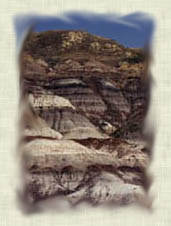
The Royal Botanic Gardens at Kew in London have long been the haunt of botanists and gardening enthusiasts. Nothing else in the country surpasses it as a showground for the plant kingdom. In July 1995, the Prince of Wales opened a new exhibition which one reporter described as `one of the most ambitious projects in Kew's history'. Writing in the Weekend Telegraph (1 July 1995), John Lucas said:
-
`What the creators of this new 650,000 exhibition have produced is a virtuoso
piece of stagecraft: artificial rocks so convincing you feel like clambering
up them; giant trees towering into the glass roof that are not real trees
at all; plants that you assume are models until you realise they are alive
and growing, tucking themselves into crevices in the 200 tons of glass-reinforced
concrete rocks as if it were the most natural thing in the world'.
I have to admit that I did not visit the exhibition without some apprehensions. A comment made some 35 years ago by E.J.H. Corner of Cambridge University (a leading botanist) has made an enduring impression on me:
-
`But I still think that, to the unprejudiced, the fossil record of plants
is in favour of special creation ... Can you imaging how an orchid, a duck
weed, and a palm have come from the same ancestry, and have we any evidence
for this assumption? The evolutionist must be prepared with an answer, but
I think that most would break down before an inquisition' (MacLeod,
A.M. and Cobley, L.S. (eds) 1961. Contemporary Botanical Thought.
Chicago: Quadrangle Books, page 97).
The House is divided into zones, each of which contributes something to the story of plant origins. In the Precambrian zone, the first exhibit is a bubbling, muddy pool - apparently lifeless. From this, the visitor is left to infer that simple forms of life arose spontaneously. The impression made is that the pool contains the primeval `soup' which has been so favoured by the advocates of `chemical evolution'. The problem with this exhibit is that not only is there no evidence for such a soup in the geologic record, but even if there were, scientific studies of its chemistry have indicated that the probability of life emerging spontaneously is so infinitesimally small that we must conclude that it would have remained forever sterile.
Moving along the path, the visitor encounters models of stromatolites formed by cyanobacteria (Precambrian zone), green algae (Silurian zone), models of the first land plants (Silurian zone), mosses, liverworts, clubmosses, ferns and horsetails (Carboniferous zone), and cycads, conifers and early flowering plants (Cretaceous zone). Sometimes models are used, at other times the exhibition employs living representatives of the different plant groups. A pertinent observation might be made here is that, although most species of plants in the fossil record are no longer with us, most major groups of plants are here today in a form which is close to their first appearance in the fossil record. Thus, we do not have an obvious record of evolution, but rather the progressive appearance of different types of plants through the geologic record. Once the basic type appeared, subsequent changes were relatively minor.
A visually interesting way of presenting the stasis that is apparent in the plant kingdom is to have fossil leaves alongside their nearest living relatives. Dozens of examples of such `living fossils' can be identified without too much effort. Some years ago, I was pleased to visit a dinosaur exhibition where a living `Jurassic Park' had been set out with representatives of plants coexisting with dinosaurs. Hints of this approach were apparent in the Evolution House - but much more could have been done to bring the fossil record to life.
The visitor trail ends in a cave in which there is an exhibit describing the different mechanisms of pollination used by flowering plants. There is useful information about pollination, but nothing to support evolutionary explanations. Jim Keesing, one of the botanists working at Kew, is reported as saying:
-
`Some people have commented that the exhibition should go into more recent
developments of flowers. But what we are doing in the Evolution House is
explaining the origins of the plants which are out there in the rest of
the gardens at Kew' (Weekend Telegraph, 1 July 1995).
How might a Christian portray these same plants? A key element for Christians is intelligent design: God is the Master Craftsman and plants form part of his handiwork. Each of the exhibits could be presented as displaying some distinctive design feature - equipping that plant for life in its appropriate environment. Similarly, the varying techniques of pollination in the flowering plants could be presented in terms of design. Sad to say, there is nothing about God's exquisite design at Kew - plants are said to change over time, but without without direction or any need for intelligent input from a Creator God.
Back in the Kew Gardens bookshop, it was very interesting to note the words of Professor V.H. Heywood in Flowering Plants of the World(2nd ed., London: B.T. Batsford Ltd., 1993).
-
`In the absence of a satisfactory fossil record, such evolutionary relationships
have to be deduced from a comparison of the present-day representatives
of the families and from attempts to extrapolate backwards what their past
evolutionary history might have been. Various principles have been suggested
for evolutionary trends in characters and for the relative degrees of advancement
or primitiveness. On the basis of such arguments conclusions are drawn as
to the evolutionary states and position of the families possessing such
characters. Unfortunately, while there is general agreement on some of these
principles, there is much dispute as to their application and much depends
on which characters are regarded as having greater phyletic importance'(page
12).
David J. Tyler (1996)

